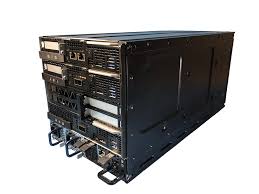
Continuous intelligence (CI) platforms can be used to collect telemetry data from various sources, perform analysis on that data, make inferences about the data, and provide real-time insights that help businesses understand what’s going on.
For years, network, application performance, and security monitoring were fairly passive operations. Systems collected key telemetry data, and operators received alerts when a particular metric crossed a preset threshold.
Operations were limited in two ways. Data often was non-existent. Many systems and critical elements simply did not collect or send status data. Or the data frequency was too low. A device or service might send an update once a day or once an hour.

Many times, the lack of data leads to a situation where many problems would go undetected. The only way IT, DevOps, or SecOps teams would know there was a problem was when they got a call or email complaining that a system or service was down or a breach had occurred.
Obviously, many organizations have moved past this wait-till-it-breaks mode of operation. Many use systems and services that stream real-time telemetry data.
See also: Continuous Intelligence Insights
Fast-paced telemetry data needs fast-paced analysis
The problem with this approach is the glut and the speed of the data. There is not time to store the data and perform analysis after the fact. Such analysis can help find the cause of problems.
The problem is that almost everything today, be it a product or service, is embedded with software agents or IoT devices that constantly emit status data. Businesses get flooded with a stream of logs, traces, and telemetry metrics.
The analysis of this data and the derivation of insights need to be done at the speed of the data. Simply put, companies need insights in real-time so they can take action as events are occurring.
Continuous intelligence (CI) can help. CI platforms can be used to collect data from the various sources, perform analysis on that data, make inferences about the data, and provide real-time insights that help businesses understand what’s going on.
There are many ways continuous intelligence can be used within an organization for different purposes. Examples include:
- Developers can use continuous intelligence to build better software faster by gaining end-to-end observability across logs, metrics, and traces to find root causes.
- Security staff and analysts can use continuous intelligence to automatically triage alerts, detect threats across all data sources, and speed up incident investigations.
- IT operations staff and site reliability engineers can use continuous intelligence to maintain the high reliability of applications and infrastructure.
- Line of business leaders can use continuous intelligence to track their business service level indicators (SLIs), key performance indicators (KPIs), and key risk indicators (KRIs) in real-time to serve and optimize business operations across all parts of a digital enterprise.
- NetOps staff can monitor network usage and respond to performance issues instantly based on traffic patterns
- Customer-facing groups can analyze the vast amount of behavioral data in real time to tailor interactions and support self-service
All of these functional areas benefit from CI as it delivers insights at the speed of the data itself.







